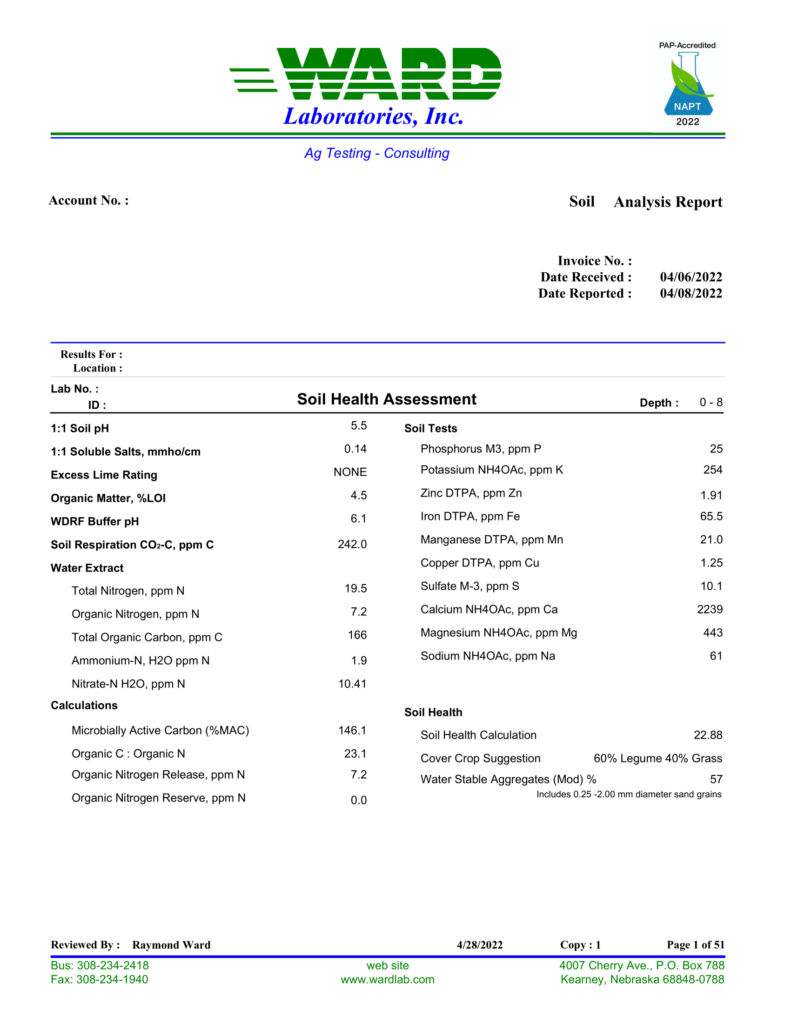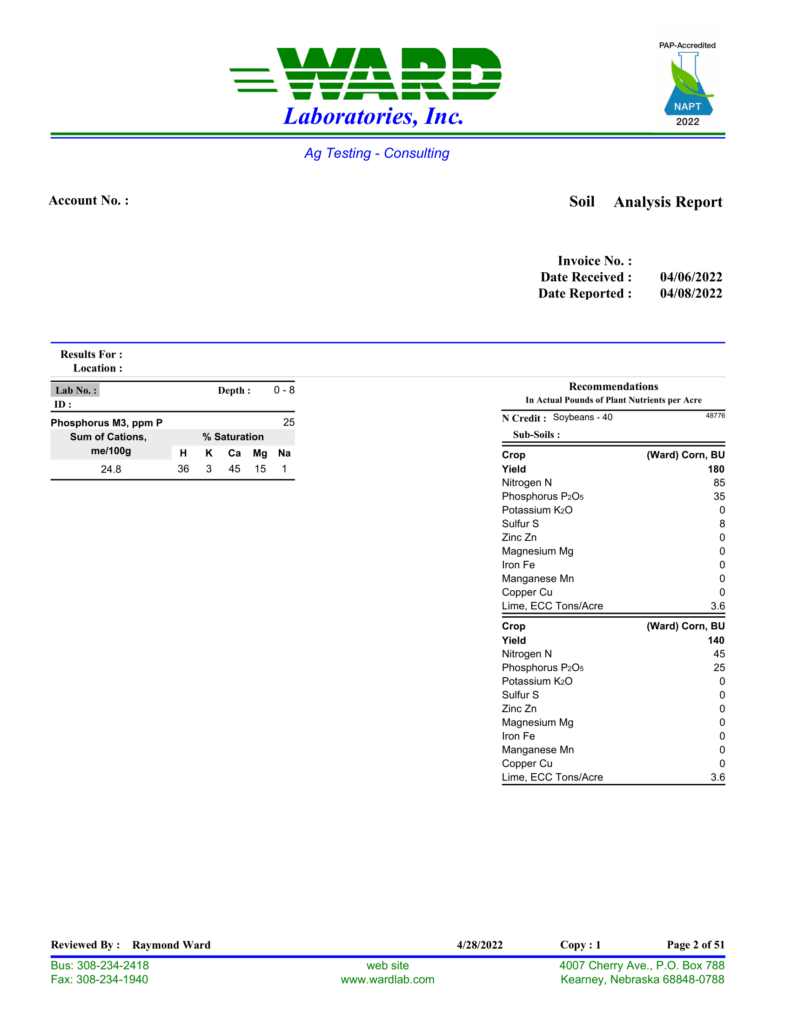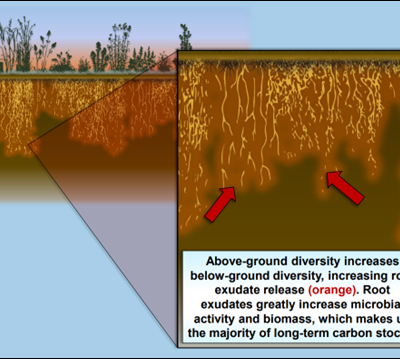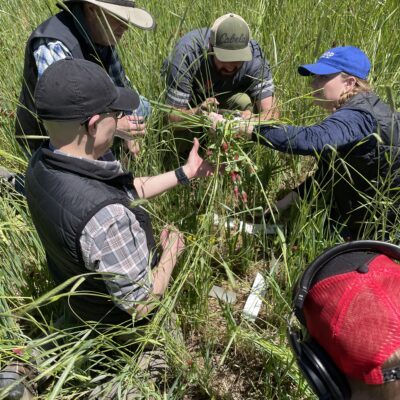In February 2022, Ward Laboratories, Inc. introduced a new tool to measure soil health. The Soil Health Assessment (SHA) is made up of four analyses. There are two biological, one chemical and one physical measurement to evaluate soil health.
Biological
The first biological test is the 24-hour CO2 soil respiration measurement. We take 40 grams of dried and ground soil and add 12ml of deionized water. The soil and water are sealed in a Mason jar and incubated at 75°F for 24 hours. The re-wetting process brings the soil microbes back to life. They exhale CO2 just like you and me. Using a Li-Cor CO2 gas analyzer, we measure CO2 in parts per million (ppm). The higher the number, the more microbial life there is in the soil sample.
The second biological measurement is the water extractable organic carbon(WEOC) and water extractable organic nitrogen (WEON). Also reported in ppm, this test measures the amount of the most readily available food supply for the microbes. We also use a water extract to measure plant available nitrate and ammonium.
With these two measurements we can make valuable calculations to measure soil health. The first is microbially active carbon (%MAC). This will tell us if the food supply is large enough for your microbial population. We like to see this number between 20-80 %. If it is over 100%, then we don’t have enough carbon and nitrogen in the system. The microbes will then attack organic matter to gain their nutrition needs. We want to build organic matter, not break it down. Furthermore, they also will consume the glues which hold the soil aggregates together. Neither scenario is desirable.
Plant available nutrients
Additionally, we will give an organic nitrogen release value. This is organic N that will become plant available during the growing season. This is what makes a soil health measurement different than a regular soil test, which only reports plant available N. The organic release is a nitrogen credit when making nitrogen recommendations for whatever crop you are growing.
Furthermore, we report a soil carbon to nitrogen ratio. We would like to see this value between 8-15: 1. If it is below 8, we need to get more carbon into the system. Conversely, if it is above 15, we need to add more nitrogen with legume cover crops.
Finally, we give a soil health calculation. This is based on a formula using CO2 ppm, WEOC and WEON. With this calculation, or score, you can track your progress from year to year as you implement regenerative practices.
Chemical
To measure soil nutrients outside of nitrogen, we use our regular chemical extract that we use for traditional soil analysis.
For phosphorus and sulfur, our standard extract is Mehlich III. For phosphorus, any location west of the continental divide defaults to Olsen extract as the soils in that region are all calcareous. We can also run Bray P1 extract. Both Olsen and Bray are available upon customer request at no additional cost.
For cations, potassium, magnesium, calcium, and sodium, we use ammonium acetate for extraction. By using this extract, we now report cation exchange capacity (CEC) and base saturation percentages. With our previous soil health test, we were not able to report these two important items.
Micronutrients, zinc, iron, manganese, and copper we use DTPA extract.
All these extracts are calibrated to a yield response or sufficiency level by over 50 years of land grant university research. We are often asked for nutrient recommendations based on soil test results. Using the regular soil extracts, we have total confidence that the fertility recommendations are indeed correct.
Physical
Within the SHA package, we have added a physical measurement, modified wet aggregate stability. Soil aggregation is an extremely important characteristic to measure soil health. The ability to take in and store water helps soil become drought proof. We have offered a wet aggregate stability test for over three years, but with that measurement, if sand was over 50% of the total texture, we only reported: Sand Present. The report did not give a percentage of water stable aggregates. With the modified measurement, we count sand grains 0.25-2mm in size as an aggregate. To a producer, sand is an aggregate. It takes in moisture and holds it in the pore space.


In conclusion, our SHA, with its four valuable and informative individual analyses, is a true way to measure soil health. The biological measurements give you an idea of the “life” in your soil. Furthermore, WEOC and WEON indicate the food available to support that life. The SHA shows a balanced evaluation through plant available nutrients. Additionally, the chemical part of the SHA provides accurate, time-tested values that provide accurate nutrient recommendations. Finally, the physical portion of the SHA, aggregation in the soil is critical for storing water. The ability to hold what mother nature provides is essential in holding off drought.
The Soil Health Assessment is an evaluation that fits producers wherever they are in their regenerative journey. Whether the producer has been doing all five steps of soil health for 10 plus years, or just beginning to add cover crops, crop diversity or livestock, the SHA works for everyone.
To learn more check out our: SHA Interpretation Guide




